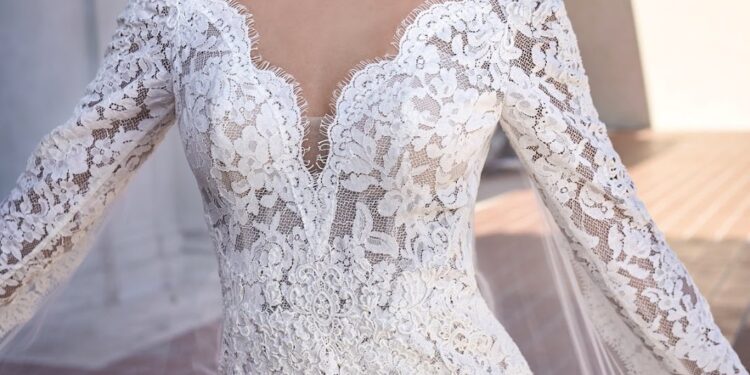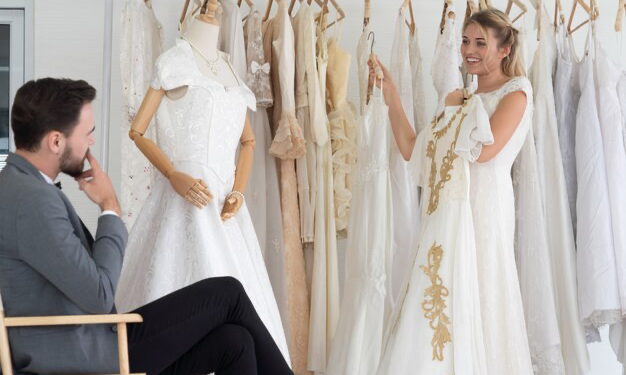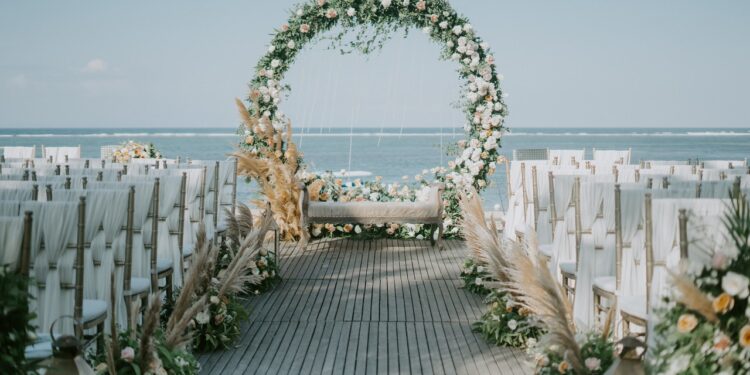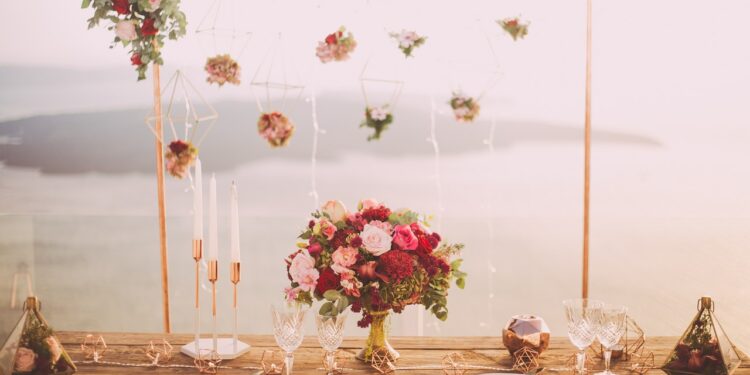Often woven with intricate lace, wedding gowns are canvases of elegance. Each type of lace adds its own unique charm and transforms the allure of a gown. Before choosing your dream gown, understanding the different lace options can help you capture your intended bridal style.
Types of Lace for Wedding Dresses
Lace is a stunning and intricate fabric often used in wedding dresses, adding elegance and a timeless appeal. Here are several types of lace commonly found in wedding dresses:
1. Cotton Lace

Elegant and breathable, ideal for beach weddings. Cotton lace is a type of lace made from cotton threads. It’s a popular choice for various garments, including wedding dresses, due to its softness, breathability, and natural feel. Cotton lace often comes in different varieties and can be used to create various styles:
- Crocheted Cotton Lace;
- Guipure Cotton Lace;
- Embroidered Cotton Lace;
- Chemical Cotton Lace:
Cotton lace offers a natural, comfortable option for wedding dresses, especially for brides looking for a softer, more relaxed feel compared to traditional synthetic lace fabrics. Its versatility allows for a range of designs, from vintage-inspired to modern styles, making it a favorable choice for many brides.
2. 3D Floral Lace
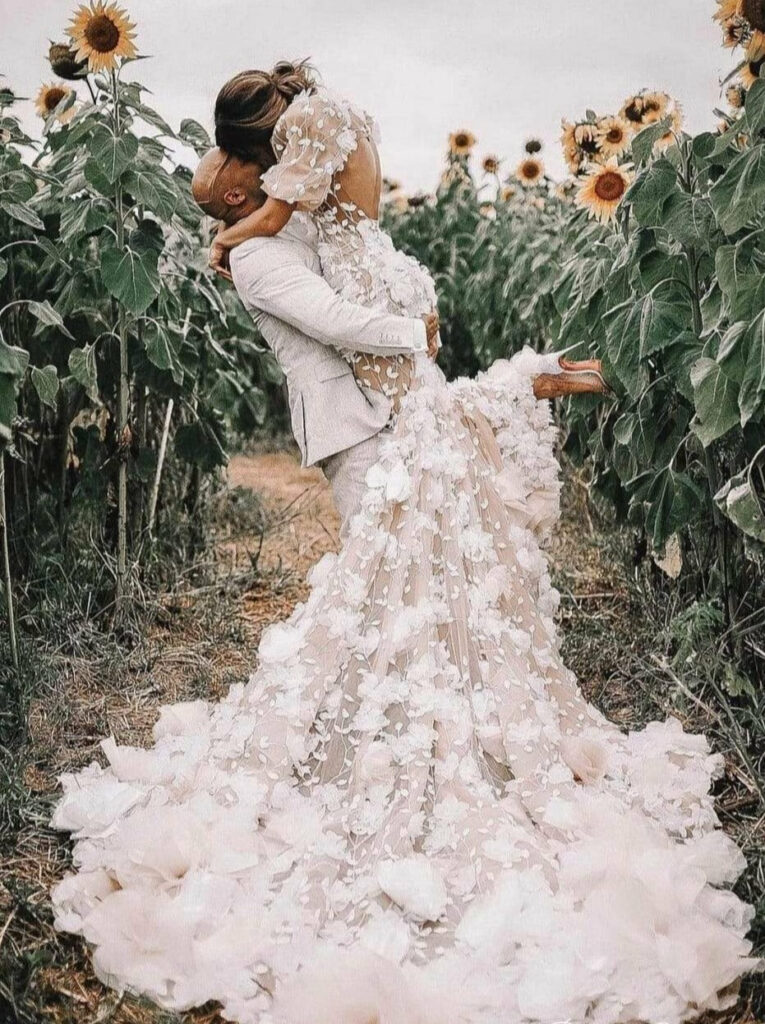
Adds dimension but requires care due to its protruding patterns. 3D floral lace is a stunning variation of lace that incorporates three-dimensional elements, creating an intricate and textured appearance. This type of lace is known for its lifelike floral motifs that seem to pop out from the fabric, adding depth and dimension to wedding dresses and other garments.
Brides who appreciate intricate, detailed designs and a touch of whimsical elegance often opt for wedding dresses featuring 3D floral lace as it adds a unique and captivating element to the gown.
3. Chantilly Lace
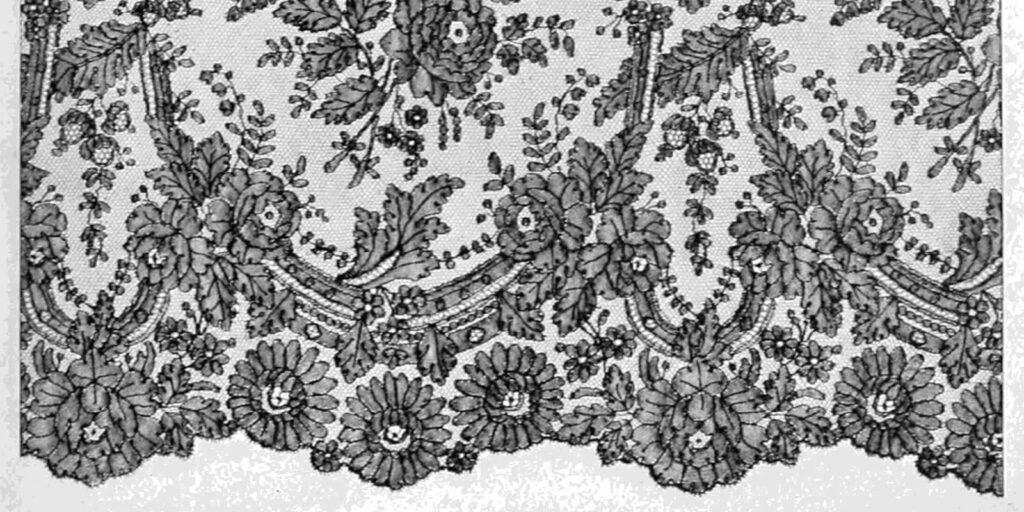
Chantilly lace is a highly coveted and delicate type of lace that originated in the city of Chantilly, France, in the 17th century. Renowned for its intricate and elegant designs, Chantilly lace has become a classic choice for wedding gowns and haute couture due to its timeless beauty. Here are some key characteristics:
- Fine and Sheer Texture: Chantilly lace is known for its lightweight and sheer quality, making it an excellent choice for creating ethereal and delicate bridal looks. It’s usually made with a fine ground and features ornate designs;
- Intricate Floral Patterns: The lace typically showcases elaborate floral motifs, often with scalloped edges. The motifs are outlined with fine threads, creating a beautiful contrast against the sheer background;
- Traditional Aesthetic: Chantilly lace exudes a classic and romantic vibe, making it a preferred choice for traditional wedding dresses. Its timeless appeal has ensured its popularity across different fashion eras;
- Versatility: This lace can be used in various gown elements, including bodices, sleeves, overlays, or as accents along the hemline. It’s versatile and can complement different dress silhouettes;
- Quality Craftsmanship: Authentic Chantilly lace is typically made using traditional techniques, involving hand craftsmanship and intricate needlework, resulting in its high-quality and intricate appearance.
Due to its exquisite beauty and historical significance, Chantilly lace remains a favorite among brides seeking a timeless and refined look for their wedding attire. Its delicate nature and intricate designs add a touch of romance and sophistication to bridal gowns.
4. Alencon Lace

Alençon lace is another exquisite and highly detailed lace that originated in France, specifically in the town of Alençon. It’s renowned for its intricate and elaborate designs, often used in high-end bridal couture.
Due to its intricate detailing and timeless elegance, Alençon lace remains a sought-after choice for brides looking for a luxurious and refined touch in their wedding attire. It’s fine00 craftsmanship and intricate designs add a touch of opulence to bridal gowns.
5. Basketweave Lace

Modern and geometric in design, offering a contemporary touch. Basketweave lace is a distinctive type of lace known for its intricate woven appearance, resembling the pattern of a traditional basket weave. Basketweave lace stands out due to its intricate woven pattern, offering a departure from the more traditional floral or embroidered laces. Its structured and textured appearance adds a modern and geometric element to clothing designs.
6. Embroidered Lace
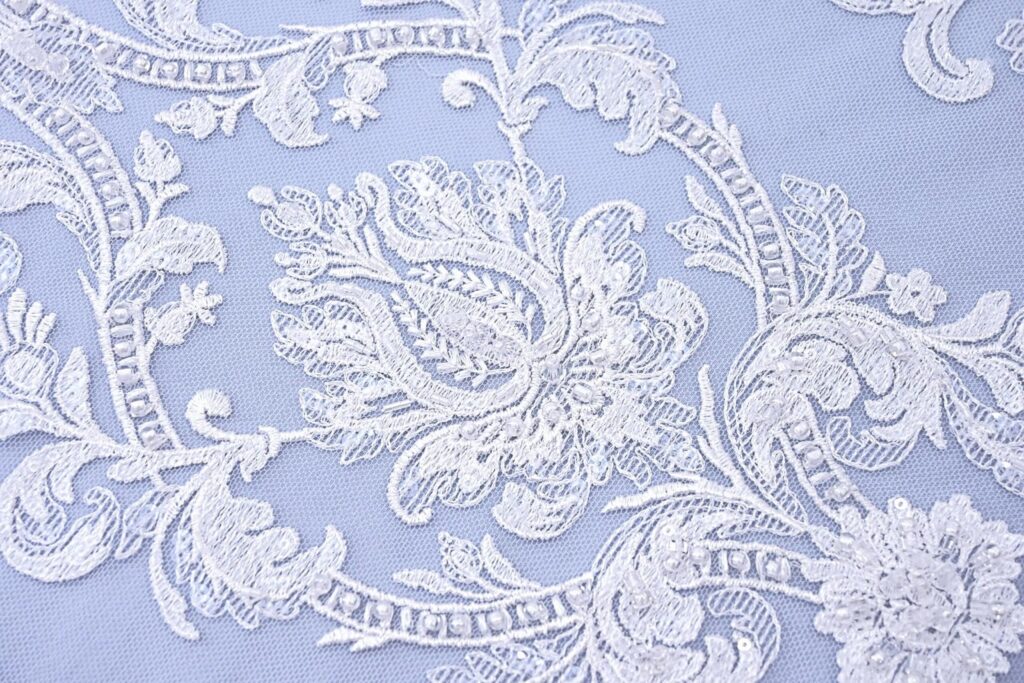
Traditional with intricate needlework, accommodating additional embellishments. Embroidered lace combines the artistry of embroidery with the delicacy of lace, offering a versatile and visually stunning option for bridal gowns and other elegant garments. Its intricate detailing and ability to be tailored to specific preferences make it a timeless choice for brides seeking a touch of sophistication and individuality in their wedding dress.
7. Guipure/Venetian Lace
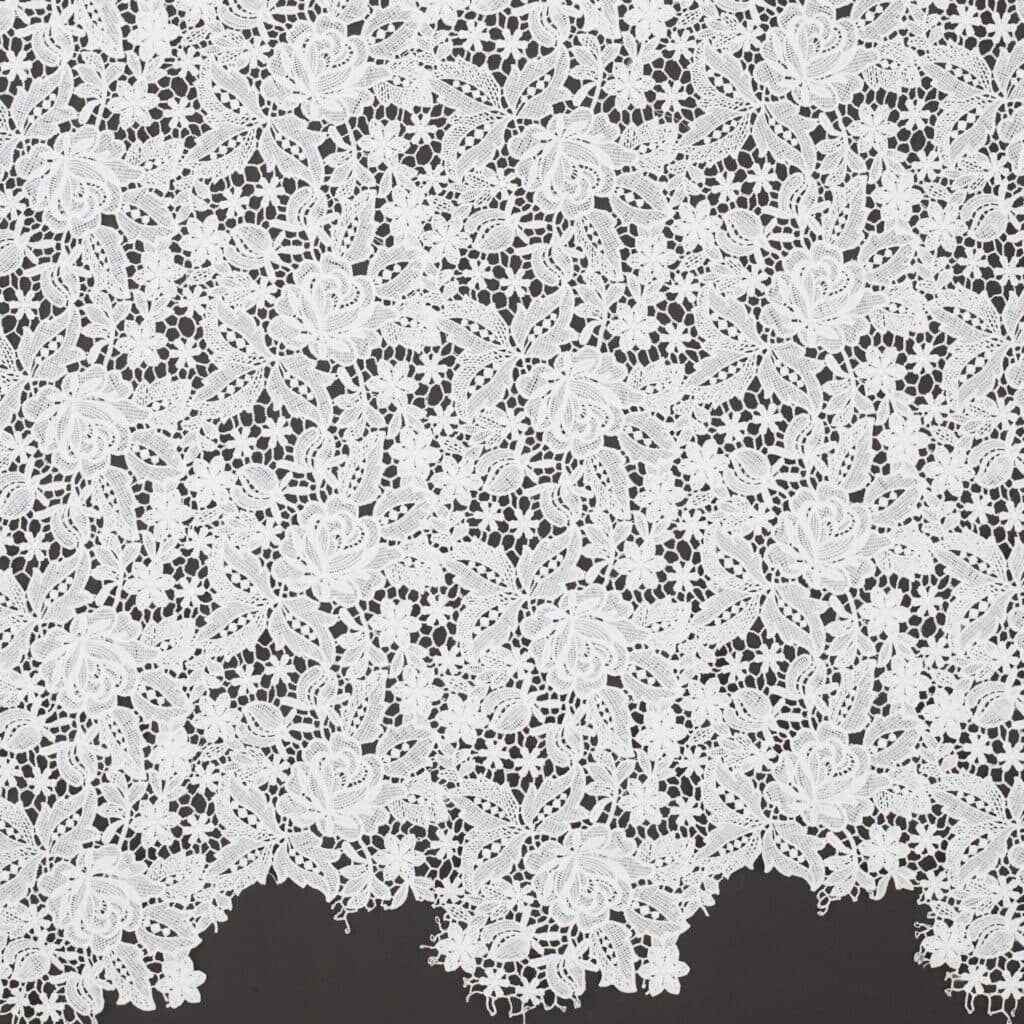
Distinct for its lack of netting, heavier but warm for winter weddings. Guipure or Venetian lace stands out for its striking designs, solid structure, and ability to create bold fashion statements. Its versatility and ability to add a luxurious and textured look to garments make it a popular choice for designers looking to create visually captivating pieces.
8. Eyelet Lace

Bohemian yet classy, featuring small holes and circles. Eyelet lace is a charming and distinctive type of lace characterized by its small, evenly spaced, and often geometrically shaped holes, called eyelets.
Eyelet lace’s intricate yet airy design creates a visually appealing texture that adds a touch of sweetness and sophistication to clothing. Its versatility allows for a range of fashion styles, from classic to more laid-back, making it a versatile choice for various apparel designs.
9. Point D’Esprit Lace
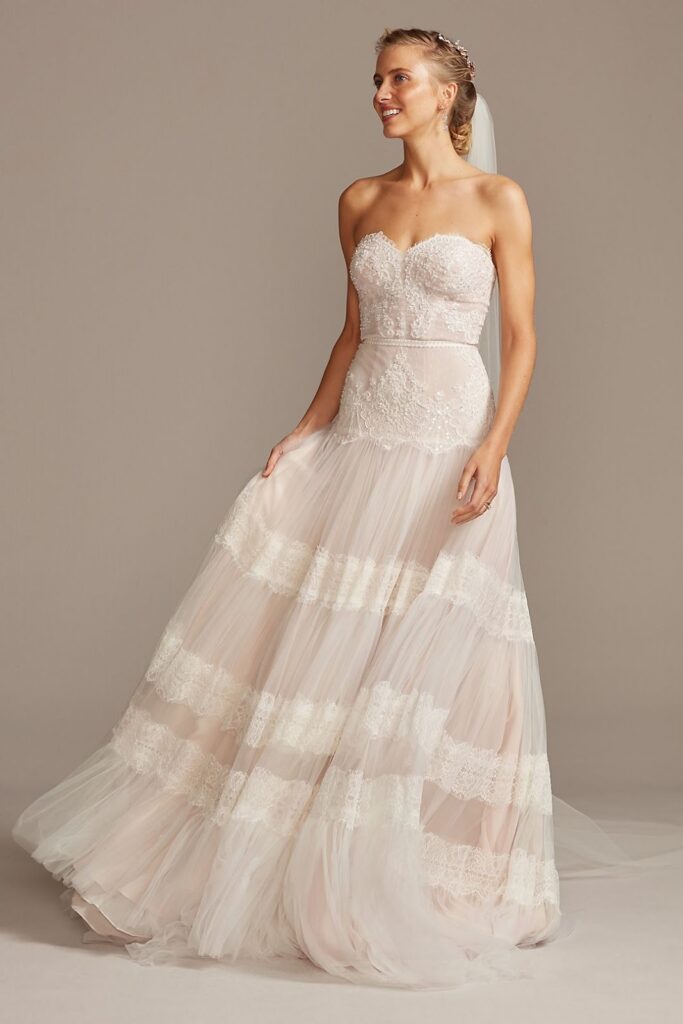
Lightweight with dotted ovals, ideal when layered with other fabrics. Point d’Esprit lace, a delicate and elegant type of lace, is distinguished by its small, regularly spaced dots or Swiss dots on a sheer or fine net background.
This lace type’s subtle yet distinctive dot pattern adds a touch of whimsy and grace to garments. Its versatility and timeless appeal make it a favored choice for brides seeking a delicate and romantic aesthetic in their wedding attire.
10. Sequined or Beaded Lace
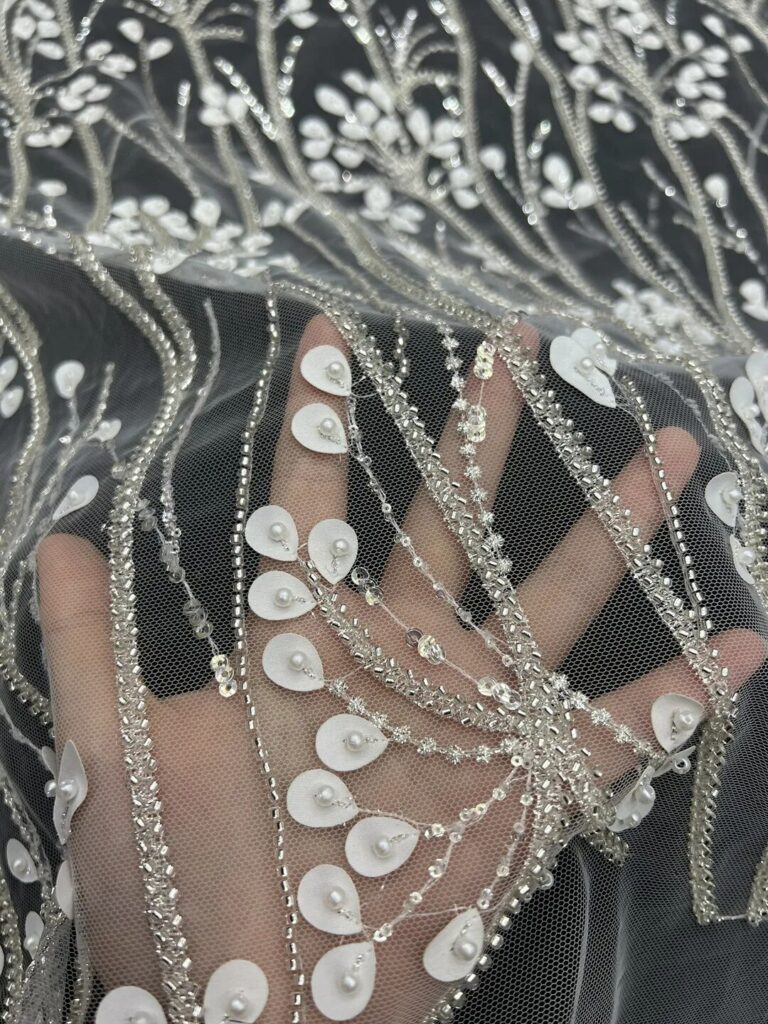
Sequined or beaded lace is a glamorous and luxurious variation of lace that incorporates sequins, beads, or both into the lace fabric.
This type of lace is a stunning choice for those seeking a glamorous and opulent look for their attire. Whether used as overlays, accents, or for entire garment sections, sequined or beaded lace adds a touch of extravagance and sophistication to wedding gowns and formal wear. Subtly sequined for a touch of glamour or heavily beaded for an elegant shimmer.
11. Brussels Lace
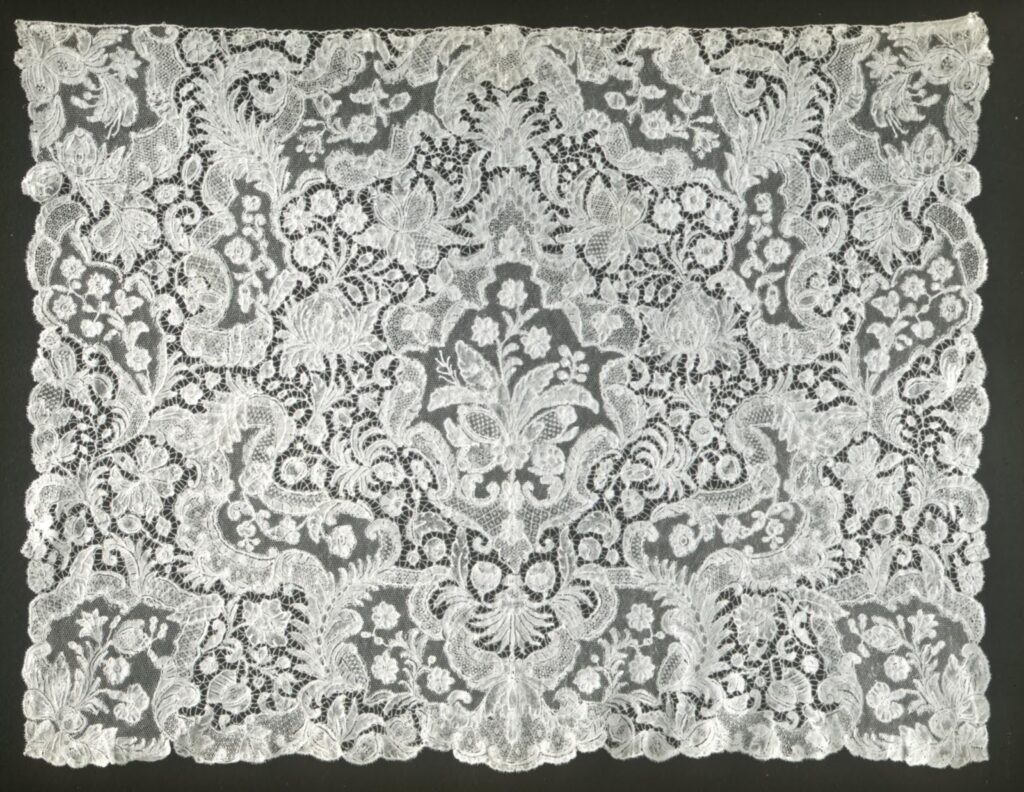
Rare and intricate, boasting unique designs and historical significance. Brussels lace is a renowned and exquisite type of lace that originated in Brussels, Belgium. It’s considered one of the finest and most luxurious laces due to its intricate craftsmanship and delicate design.
Brussels lace represents a pinnacle of lace-making artistry, known for its fine details, historical significance, and timeless elegance. Its intricate designs and delicate nature make it a sought-after choice for those seeking heirloom-quality and luxurious lace for special occasions.
Choosing Your Perfect Lace
Consider your wedding theme, location, and personal style. Each lace type embodies its own essence, from romantic classics to modern chic. Bridal shops often offer combinations of lace types, providing versatile options.
Conclusion
Selecting the right lace for your wedding dress involves understanding the nuances of each variety. Embrace the charm of lace that resonates with your vision, ensuring your bridal gown is a timeless representation of your style and the essence of your special day.

